#Christi Barth
Text
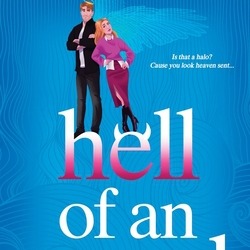
REVIEW
HELL OF AN ANGEL (Unlocking His Heart 2) by Christi Barth at The Reading Cafe:
'a fun, action-packed story in a wonderful fantasy world '
0 notes
Link

0 notes
Text
Summer is the perfect time to launch FEARLESS SUMMER
Summertime launch for FEARLESS SUMMER. First up, @BackwaterBooks, May 4-- with @monashroffwrite, @ElizaKnight, @MC_Vaughan, @AlyssaRobertsWr, @christi_barth, @MKHaleAuthor and #LeslyePenelope. Can't wait!
@champagnebooks
Now that the paperback edition of FEARLESS SUMMER has been released, it’s time to celebrate.
Plans are still in the works for a launch in Chincoteague, the setting for FEARLESS SUMMER. In the meantime, here are the dates for book signings beginning in May.
Thursday, May 4, 6:30 p.m., at Backwater Books, Ellicott City: I am so excited to be signing books with some of my favorite (and so…

View On WordPress
#Alyssa Roberts#Backwater Books#Bethany Beach Books#book signing#bookstagram#bookstores#Champagne Book Group#Chincoteague#Christi Barth#Elin Hilderbrand#Eliza Knight#Fearless Summer#Kristin Harmel#Leslye Penelope#M.C. Vaughan#M.K. Hale#Mona Shroff#Park Books#The Greyhound
0 notes
Text
Book Review: Imperfect Angel by Christi Barth

Imperfect Angel is a paranormal romcom. That's the best way to describe it. It's light, it's cheerful, it features a cast of grumpy/sunshine characters, and while there is some "all hell's about to break loose" mythology and fantasy, it doesn't take itself too seriously.
The basic premise is that Maisy Norgate, an artist and a teacher, receives an inheritance from an uncle she never knew existed. Said inheritance ends up being an old, rusty key which seems to open nothing. At least as far as she can tell. So she gives it away, unbeknownst to her, to a demon. This is when Rhys, a Nephilim who is half human, half angel, appears on her doorstep and informs her that she's primed to become the next Keeper--as in the Gatekeeper of Hell--and it's his job to convince her that demons are real and make sure those gates remain closed.
In an effort to prevent the end of the world, the two reluctantly team up. However, what starts out as bickering and arguing over semantics soon develops into a love connection that neither one of them can bear to fight.
While I do think Rhys' scolding-to-flirting ratio could be a little schizophrenic at times, and that the pacing could have been better, I thought this was simple and cute. Silly, fantastical fun. Like I said before, it didn't take itself too seriously. It's the kind of story you can fall into without having to think too hard, with a dust of magic that radiates optimism as well as happy endings, and I don't know about you, but I think we could all use a dose of that sometimes.
I voluntarily read and reviewed an advanced copy of this book. Thank you to NetGalley and Entangled Publishing for the opportunity!
3/5 stars
**Follow me on Goodreads
#ashlee bree's book reviews#imperfect angel#christi barth#fantasy#paranormal#paranormal romance#romance#recs: ashlee approved!#read july 2022#coming october 2022#bookblr#book reviews
1 note
·
View note
Text
{Key to Hell Romance Review} Imperfect Angel by @Christi_Barth
{Key to Hell Romance Review} Imperfect Angel by @Christi_Barth
Maisy Norgate’s position as an art teacher was eliminated so she’s working at the local coffee shop. She never expected to receive a bequest from an uncle she never knew existed. Once she is given an intricately designed key, she is even more confused about the motives behind it.
Nephilim Rhys Boyce, along with his Nephilim best friends Gideon and Zavier, is sent to protect the new Keeper of the…
View On WordPress
0 notes
Text

Description
Hallie Scott expected the hangover from her thirtieth birthday. She did not expect to find her calm, orderly life as Swan Cove’s head librarian to completely change overnight when her best friend added Hallie to the mayoral ballot because of one little remark. One. Now she’s going head-to-head with the small coastal town’s prominent “prince,” Fitz Montgomery…whose charm is about to get seriously checked.
All Fitz wants is to prove himself, beyond being the latest in the unbroken line of Montgomery mayors. Nobody, least of all Fitz, expected the town’s cute-as-hell librarian to step up and run against him. Hallie’s definitely in over her head, which is a problem, since Fitz wants a fair fight. But is he helping Hallie level the playing field…or arming his opponent?
Hallie and Fitz are on completely different sides. Their backgrounds, their lives, their ongoing ebook vs paperback argument. But they’re both about to learn that the art of war is nowhere near as complicated as falling for the enemy...
My Review
3 ⭐️⭐️⭐️
Hottie On Her Shelf by Christie Barth is a fun Rom Com featuring the town librarian Hallie who just turned thirty, and wakes up to find that her best friend Megan took her drunken conversation seriously and put her on the ballot for mayor of Swan Cove, against the current mayor Fitz.
Fitz Montgomery never wanted to be a mayor but it was a family legacy of sorts. So he is thrilled to have some competition finally.
Hallie doesn’t quite know what to do. She has entered the competition at the very end and is new to politics. So Fitz helps her to even the playing field.
These two didn’t count on the sizzling chemistry between them. But what can come of it if they can’t even be seen alone in public together? And how will they ever get past the competition?
This is a little slow in the beginning and takes a while to heat up. But it does get better in the last part of the book.
Received an early copy and this is my honest review.
0 notes
Text
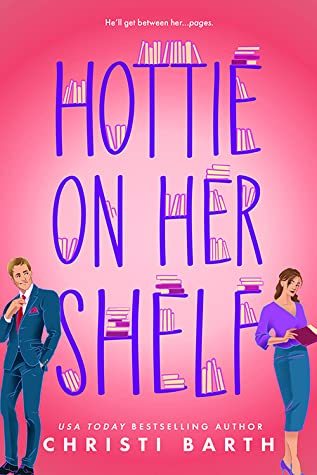
Thank you to NetGalley for allowing me the opportunity to read an ARC of "Hottie on Her Shelf" by Christi Barth, scheduled to release on July 11th, 2022!
Overall, I would rate this novel a 3/5 stars. :)
This book tells the story of Fitz and Lucy, who are both running for town mayor. Fitz (and his family have been running the town as mayor(s) for many decades now, and Lucy is the town's librarian, who originally grew up in another city that Swan Cove tends to look down upon. Lucy's friend Megan is the one who decides to nominate her for a chance to run for mayor on Lucy's 30th birthday.
Lucy does not expect to fall for Fitz, and Fitz does not expect to fall for Lucy. Fitz's family does not approve of Lucy or where she comes from. Not to mention the fact that these two candidates are running for office against each other. Is it possible for a relationship such as theirs to survive? You will have to read more to find out!
While I did enjoy this story, I am not very big on politics, so I think that's what made me dock a few stars off of my rating. The spiciness level of their romantic relationship, however - was just enough for me.
0 notes
Text
Paranormal/Supernatural romances seem to be all the rage now. I always say I'm not too into it. Until you get me with a good old-fashioned grumpy-sunshine, enemies-to-lovers. A delightful read that could've been cleaned up a bit more in editing. Maisie and Rhys can be too cutesy for their own good. Needed more sexy times for sure. Overall, pleasant experience for something that's fallen into the middle of my Halloween horror reads. Thank you to Entangled Publishing, LLC, Entangled: Amara, and NetGalley for providing an eARC for a honest review.
0 notes
Text
P. T. Forsyth: Theodicy and the Cross of Christ
P. T. Forsyth: Theodicy and the Cross of Christ
By: Daniel Merritt, PhD, ThD | June 3, 2022
Theodicy Defined
While the word “theodicy” is not used in daily conversation, the question the word poses has been entertained by all rational persons at one time or another. What does the word theodicy mean? The word comes from two Greek terms: theos meaning “God,” and dike meaning “justice” or “justified or right.” Dale Moody informs, “The word was…
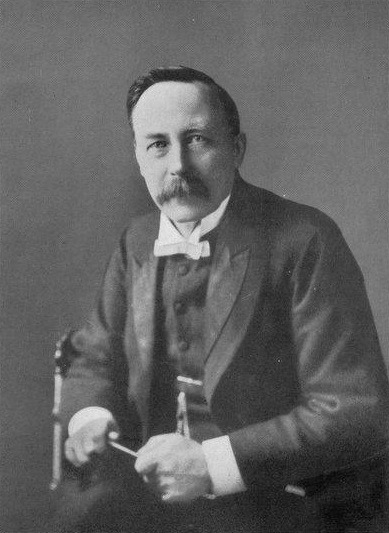
View On WordPress
0 notes
Text
What Was So Special About Greta Garbo?
An enigma onscreen and off, the actress only magnified her celebrity by suddenly renouncing it.
By Margaret Talbot
December 6, 2021
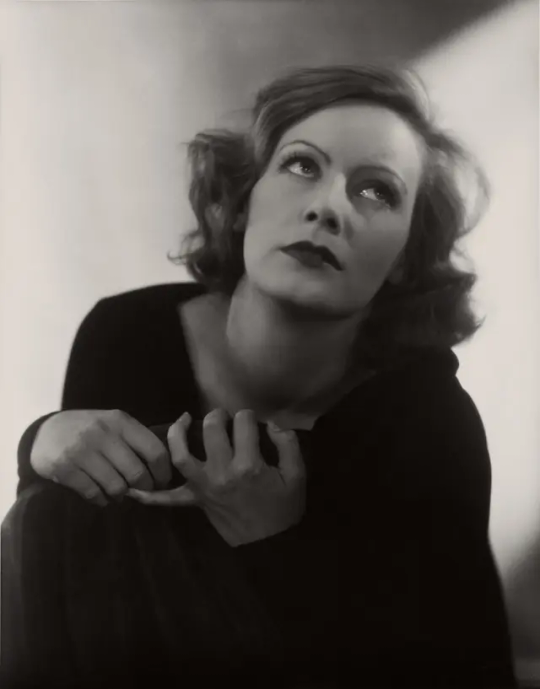
“If only once I could see a preview and come home feeling satisfied,” Garbo said.Photograph by Edward Steichen © 2021 The Estate of Edward Steichen / ARS, courtesy the George Eastman Museum
Fame is so powerful that renouncing it can seem like the supreme power move. Celebrities who retreat from the public eye (Howard Hughes, J. D. Salinger, Prince) will always be legends, no matter what else they may be. Rumored comebacks tantalize. Paparazzi circle. The mystery deepens. In 1941, at the age of thirty-six, Greta Garbo, one of the biggest box-office draws in the world, stopped acting and, though she lived for half a century more, never made another film. For a star who, more than any other, “invaded the subconscious of the audience,” as Robert Gottlieb writes in his new biography, “Garbo” (Farrar, Straus & Giroux), this was an abdication, a privilege of monarchical proportions. But it was also a decision made by one particular, peculiar person who had never been temperamentally suited to celebrity in the first place. There was a reason, beyond the exertions of the Hollywood publicity machine, that a single line she uttered in one movie—“I want to be alone”—became so fused with her image. What can look like a strategy for keeping the public interested can also be a sincere and committed desire to keep it at bay.
Few other performers have ascended as quickly to mononymic status as Garbo did—she started off the way most of us do, with a first and last name, but the first soon fell away, like a spent rocket booster, in the ballyhoo surrounding her. When she appeared in her first sound picture, “Anna Christie,” the ads proclaimed, “Garbo talks!”; for her first sound comedy, “Ninotchka,” it was “Garbo laughs!” Quite why she became such a phenomenon is a puzzle to which film critics and biographers keep returning. Garbo made only twenty-eight movies in her lifetime. (By comparison, Bette Davis made close to ninety, and Meryl Streep has made nearly seventy and still counting.) That slender output could be part of the mystique, compounded by her disappearing act. But Garbo had acquired an enigmatic mythos even before she ended her career—the Hollywood colony treated her like royalty. Nor has it seemed to matter that only a handful of her movies are much watched or admired today.
What Garbo had to offer, above all, was her extraordinary face, at a time when the closeup, with its supercharged intimacy, its unprecedented boon to the emotional and erotic imagination, was still relatively new. Many of the shots credited as the first closeups were unlikely to have set hearts aflame, since they were often of objects—a shoe, a wrench. But filmmakers soon grasped the centripetal seductions of the human face in tight focus. The screenwriter and director Paul Schrader picks as a turning point the moment in a D. W. Griffith film from 1912, “Friends,” in which the camera comes in tight on Mary Pickford’s face, revealing her ambivalence about which of two suitors she should choose. “A real close-up of an actor is about going in for an emotional reason that you can’t get any other way,” Schrader writes. “When filmmakers realized that they could use a close-up to achieve this kind of emotional effect, cameras started coming in closer. And characters became more complex.”
A face as beautiful as Garbo’s—the enormous eyes and deep-set lids, the way love or tenderness or some private, unspoken amusement unknit her brows in an instant, melting her austerity—was almost overwhelming when it filled the screen. She belonged, as Roland Barthes wrote, “to that moment in cinema when the apprehension of the human countenance plunged crowds into the greatest perturbation, where people literally lost themselves in the human image.” This is not to diminish her craft as an actress. But her acting was perhaps most effective in her silent films or in nonverbal scenes in talking pictures in which her face is the canvas for emotion. In the famous last shots of “Queen Christina” (1933), Garbo’s androgynous Swedish ruler stands at the prow of a ship bearing her away from her country; the body of her lover, killed in a duel over her, is laid out on the deck. Garbo stares into the distance, her face a kind of mask but no less eloquent for it. The film’s director, Rouben Mamoulian, had told her that she must “make her mind and heart a complete blank,” empty her face of expression, so that the audience could impose whatever emotions they wanted on it. The scene would then be one of those “marvelous spots,” he said, where “a film could turn every spectator into a creator.”
She was skilled at inciting such projection. More than one contemporary in Hollywood noted that her magic truly showed up only on celluloid, like a ghostly luminescence undetectable until the film was developed. Clarence Brown, who directed Garbo in seven films, recalled shooting a scene with her, thinking it was fine, nothing special, then playing it back and seeing “something that it just didn’t have on the set.” On her face, he said, “You could see thought. If she had to look at one person with jealousy, and another with love, she didn’t have to change her expression. You could see it in her eyes as she looked from one to the other.” Garbo herself, with a kind of arch, adolescent indifference, never wanted to look at the rushes. According to Brown, she’d watch only when sound pictures were played in reverse: “That’s what Garbo enjoyed. She would sit there shaking with laughter, watching the film running backward and the sound going yakablom-yakablom. But as soon as we ran it forward, she wouldn’t watch it.”
Much has been written about Garbo over the years, but Gottlieb, a former editor of this magazine, has produced a particularly charming, companionable, and clear-eyed guide to her life and work—he has no axe to grind, no urgent need to make a counterintuitive case for her lesser movies, and he’s generous with his predecessors. By the end of the biography, I felt I understood Garbo better as a person, without the aura of mystery around her having been entirely dispelled—and, at this point, who would want it to be?
The actress who came to embody a kind of unattainable elegance, who would someday wear sumptuous period costumes with a grace so offhand that they might have been rumpled p.j.’s, grew up in a cramped apartment with no indoor plumbing, in one of Stockholm’s most impoverished neighborhoods. She was born Greta Lovisa Gustafsson on September 18, 1905, to parents from rural stock. Her mother was, in Gottlieb’s description, “practical, sensible, undemonstrative”; her father, an unskilled laborer, was handsome, musical, and fun, and Greta adored him. But he was stricken by kidney disease, and Greta, the youngest of three children, made the rounds of the charity hospitals with him. “She never forgot the humiliations they endured as poor people in search of live-or-die attention,” Gottlieb writes. She was fourteen when he died, and she dropped out of school, leaving her with a lasting embarrassment about her lack of formal education. She went to work to help support the family, first at a barbershop, where she applied shaving soap to men’s faces, then at a department store, where she sold and modelled hats. She said later that she was “always sad as a child for as long as I can think back. . . . I did some skating and played with snowballs, but most of all I wanted to be alone with myself.”
Alongside her shyness and her penchant for solitude, Greta harbored a passionate desire to be an actress. As a kid, she’d roam the city by herself, looking for theatres where she could stand at the stage door and watch the performers come and go. The first time Garbo was in front of the camera was at age fifteen, in an advertising film for the department store that employed her. Sweden had a thriving film industry, and she soon quit her day job to appear in a couple of movies. At Stockholm’s Royal Dramatic Theatre, to which she was accepted at seventeen, the young actors were instructed in a system that “scientifically” analyzed the semiotics of movement and gesture. Remarkably, some of her lecture notes from that time survive—she jotted down that “the head bent forward equals a mild concession” or a “condescending attitude,” and that “the throwing back of the head” conveys “a violent feeling such as love.” Barry Paris, an earlier biographer whom Gottlieb cites approvingly, notes that “Garbo in silent films would employ that system of gestural meaning to a high degree.” She did so in her sound pictures as well. When she plays the Russian ballerina in “Grand Hotel” (1932), her body language is jittery, neurotic. Depressed, she lets her head droop as if it were simply too heavy to hold up; surprised by delight at the prospect of a romance with John Barrymore’s gentleman jewel thief, she tosses her head back at giddy angles. It might have been laughable, but instead it’s riveting.
In the spring of 1923, the gifted film director Mauritz Stiller approached the Stockholm theatre looking for actresses to cast in his new movie, an epic based on a Swedish novel, “The Story of Gösta Berling.” Stiller came from a Jewish family in Finland; orphaned young, he had fled to Sweden to avoid being conscripted into the tsar’s Army. Garbo and he were never lovers—Stiller preferred men—but their relationship was perhaps the most important in both of their lives. With his commanding height, his taste for luxury (full-length fur coats, a canary-yellow sports car), and his domineering style with actors, he had more than a touch of the Svengali. But Stiller believed in Garbo at a time when, as one veteran actress put it, Greta was “this little nobody . . . an awkward, mediocre novice,” and he loved her. (He also seems to have been the one who suggested replacing “Gustafsson” with “Garbo.”)
When Hollywood came calling—in the form of Louis B. Mayer scouting European talent for M-G-M—it wasn’t clear whether Stiller was the lure or Garbo; the director was certainly better known. In any case, Stiller made sure that they were a package deal (and, Gottlieb adds, later upped Garbo’s pay to four hundred dollars a week, an “unheard of” salary for an untested starlet). The two sailed for the United States in 1925, arriving in the pungent heat of midsummer New York. (Garbo’s favorite part of the visit seems to have been the roller coaster at Coney Island.) Then it was on to Hollywood by train.
The studio moguls gave an unknown such as Garbo a very short runway. M-G-M signed up the Swedish girl for two pictures, “Torrent” and “The Temptress,” and, as the film historian Robert Dance writes in his smart new book, “The Savvy Sphinx: How Garbo Conquered Hollywood” (Mississippi), “if those first two films were unsuccessful financially M-G-M would not renew her contract for a second year.” As it happened, both were hits. Motion Picture was among the industry outlets declaring her début “a complete success.” (“She is not so much an actress as she is endowed with individuality and magnetism,” it said.) Garbo became a fan favorite, even though she was almost uniquely averse to the kind of goofy stunts and mildly salacious photo shoots that other stars put up with. When she got to be as famous as Lillian Gish, she told one interviewer early on, “I will no longer . . . shake hands with prize-fighters and egg-and-milk men so they will have pictures to put in the papers.” Instead, she worked with consummate portrait photographers who lit her gloriously. Eventually, her films were earning enough that she was able to negotiate an unusual contract, one that gave her the right to veto scripts, co-stars, and directors. And she shunned interviews so consistently that in the end her privacy became its own form of publicity.
Despite such badassery, she never really adjusted to her new country or her new destiny, at least beyond the movie set. What looked like carefully cultivated hauteur was partly the product of awkwardness, disorientation, and grief. She hardly spoke English when she first arrived, and, within a year, she learned that her beloved sister, an aspiring actress herself, had died back home. Stiller did not make a smooth adjustment to Hollywood and, in a blow to them both, he was not chosen to direct Garbo’s first American picture. Garbo wrote to a friend in Sweden about how miserable she was: “This ugly, ugly America, all machine, it is excruciating.” The only thing that made her happy, she claimed, was sending money to her family. At a young age, Gottlieb writes, she found herself “trapped in a spotlight extreme even by Hollywood standards,” and with no psychological preparation for grappling with the kind of fame—movie stardom—that was new not just to her but to the world.
Athletic and physically restless, she soon took up the long nighttime walks that became a refuge; with her hat pulled low over her head, as it customarily was, she would have been hard to recognize. Stiller, who probably felt that his young protégée no longer needed him, returned to Sweden, where he died in 1928, at the age of forty-five, reportedly clutching a photograph of her. “He never seems to have resented her dazzling ascent to fame,” Gottlieb writes, “only wanting her to be happy and fulfilled.” Back in Sweden to mourn him, Garbo went with his lawyer to the storehouse containing his possessions, where she walked around touching his belongings and murmuring about her memories. Gottlieb says that this episode must surely have been an inspiration for the scene in “Queen Christina” in which Garbo’s character moves around a room at an inn, touching all the inanimate reminders of the lover she will never spend another night with. On sets, she would sometimes talk softly to herself about what her mentor might have told her to do—one director she worked with referred to Stiller as “the green shadow.”
Garbo appears to have been emotionally stunted in certain ways, damaged by the loss of her father, her sister, and Stiller, abashed by the limitations of her English and her education. Though she had a sense of humor, she emerges in Gottlieb’s portrait as prickly, stubborn, and stingy. The sudden onslaught of celebrity made her more so. She never married, had children, or apparently wanted to do either; she had brief romantic relationships, mostly with men (the actor John Gilbert, probably the conductor Leopold Stokowski), and likely with women, too (the leading candidate seems to have been the writer Mercedes De Acosta, the “ubiquitous lesbian rake,” in Gottlieb’s words, who had affairs with Marlene Dietrich and many others). Her longest-lasting relationships were with friends, especially, as Gottlieb makes clear, those who helped her logistically, advised her devotedly, and steadfastly refused to spill the tea about her. In these, she had pretty good, if not unerring, taste. Probably the closest and most enduring friendship was with Salka Viertel, the intellectually vibrant woman at the center of L.A.’s remarkable community of refugee writers, composers, and filmmakers from Germany.
From the start of her Hollywood career in silent pictures, Garbo was often cast as a vamp—the kind of man-eater who shimmied and inveigled and home-wrecked her way through so many nineteen-twenties movies. (See the entire career of Theda Bara.) As Robert Dance notes, “Adultery and divorce were catnip to post World War I audiences.” The parts quickly bored her: “I cannot see any sense in dressing up and doing nothing but tempting men.” Off the job, she eschewed makeup and liked to dress in slacks, men’s oxford shoes, and grubby sweaters. Her closet was full of men’s tailored shirts and ties. She often referred to herself as a “fellow” and sometimes signed her letters “Harry” or “Harry Boy.” The movie role she seems to have liked best was the learned cross-dressing seventeenth-century monarch Christina; it allowed her to stride around in tunics, tight-fitting trousers, and tall boots, to kiss one of her ladies-in-waiting full on the lips, to declare that she intended to “die a bachelor!” (As plenty of gender-studies scholars will tell you, this is one queer movie.) She expressed a longing to play St. Francis of Assisi, complete with a beard, and Oscar Wilde’s vain hero Dorian Gray. In today’s terms, Garbo might have occupied a spot along the nonbinary spectrum. Gottlieb doesn’t press the point, but remarks, “How ironic if ‘the Most Beautiful Woman in the World’ really would rather have been a man.”
Her third American film, “Flesh and the Devil” (1926)—the ultimate nineteen-twenties title—transformed her into an international star. It’s about a love triangle involving two best friends, played by the magnetic John Gilbert and the handsome Swedish actor Lars Hanson, with Garbo at its apex. It, too, is a pretty queer movie, though it seems less in control of its signifiers than, say, “Queen Christina.” As Gottlieb points out, the two male leads are forever clasping each other fervently, bringing their faces close together, as if about to kiss. (It heightens the vibe that, in silent-movie fashion, Hanson appears to be wearing lipstick some of the time, and Gilbert eyeliner.) “Flesh and the Devil” also features some of the most erotic scenes I’ve ever encountered on film. There’s one, in a nighttime garden, in which Garbo rolls a cigarette between her lips, then puts it between Gilbert’s, her eyes never leaving his, as he strikes a match and illuminates their gorgeous, besotted faces. There’s one where she lies back in sensual abandon on a couch, Gilbert’s head lolling against her lap, and he lifts her hand and drags her fingers across his mouth. And then there’s my favorite: she and Gilbert are at a Communion rail in church. By now, Gilbert’s character has killed her first husband in a duel, and she has married the other friend, but they’re still crazy about each other, natch. Gilbert sips from the chalice just before she does, and, when the priest hands it to her, she turns it around to drink greedily from the side her lover’s lips have just touched. Her expression is one of slow-burn ecstasy.
Gilbert and Garbo fell in love while they were making the movie, but their story is a sad one, mainly because Gilbert is a sad figure. He is often offered up as an example of an actor who couldn’t make the transition to sound—his voice was said to have been too reedy or something. That turns out to have been an urban legend: his voice was fine. The trouble was that he was best at playing boyish men undone by love at a time when, as Gottlieb observes, Depression-era Hollywood was more into “gangsters, snappy dialogue, musicals.” Garbo and Gilbert lived out a “Star Is Born” trajectory. When they made “Flesh and the Devil,” he was a big-name actor at the height of his powers, and he helped Garbo by making sure the camera angles were right for her and each take of her was the best it could be. One story is that he planted a stand of trees on his property in the Hollywood Hills to remind her of the woods in Sweden, and he apparently proposed to her repeatedly. (She professed herself puzzled that she kept refusing a more permanent bond, but she did.) By the time she made “Queen Christina,” in 1933, she had top billing, and she insisted that Gilbert, who was then married to someone else, and professionally on the skids, play her romantic interest—rejecting the studio’s choice, a young Laurence Olivier. Gilbert later remembered that she was tactful and considerate with him on the set, though he was drinking heavily, throwing up blood, and nervous about his performance. “It is a rare moment in Garbo’s history,” Gottlieb writes, “when we can fully admire, even love her, as a human being, not only as an artist.” Gilbert died three years later, at the age of thirty-eight. Garbo was characteristically unsentimental. “Gott, I wonder what I ever saw in him,” she remarked while he was still alive. “Oh well, I guess he was pretty.”
Why did Garbo stop acting? It wasn’t as though her star was truly on the wane. It had been years since she’d made her successful transition to talkies, with a dialogue-heavy adaptation of Eugene O’Neill’s “Anna Christie.” (From the moment she uttered her first lines, “Gimme a whiskey—ginger ale on the side—and don’t be stingy, baby,” her accent proved to be a sexy asset.) She’d been nominated for four Best Actress Oscars. In 1939, she’d made “Ninotchka,” the romantic comedy in which she played a Soviet apparatchik on a mission to Paris who falls in love with a playboy count and discovers, as the pitch for it went, “capitalism not so bad after all.” It was a huge hit—more than four hundred thousand people went to see it at Radio City Music Hall during a three-week run, Gottlieb says. Garbo is very funny, deadpanning her way through the first half of it in boxy jackets, rationally assessing Melvyn Douglas’s charms. (“Your general appearance is not distasteful.”) As one biographer, Robert Payne, wrote, the performance worked so brilliantly because it satirized “Garbo herself, or rather her legend: the cold Northerner immune to marriage, solemn and self-absorbed.”
The next and last movie she made, “Two-Faced Woman,” a clumsy attempt to re-create comedy magic with Douglas, was a turkey, but she could surely have survived it. Instead, she considered projects that fell through, turned down others (offered the female lead in Hitchcock’s “The Paradine Case,” Gottlieb writes, she is supposed to have sent her agent a telegram saying “no mamas. no murderers”), and slowly drifted away from the business of moviemaking. She had never liked the limelight and, Gottlieb says, lacked the relentless drive that animated contemporaries such as Marlene Dietrich or Joan Crawford. She doesn’t seem to have been particularly vain about her beauty, but she was practical enough to know its precise value, and to anticipate the cost of its fading. And, though she seems to have enjoyed acting, she was never satisfied with the results. “Oh, if once, if only once I could see a preview and come home feeling satisfied,” she remarked after one film screening. Garbo was no Norma Desmond, viewing her old films over and over to admire her own image. Screening some of them years later, at moma, Barry Paris reported, she got a kick out of imitating herself: “R-r-rodney, when will this painful love of ours ever die?” She once told the actor David Niven that she’d quit because she had “made enough faces.” The analysis was typical of her—unreflective, cryptic, deprecatory.
She was, Tennessee Williams thought, “the saddest of creatures—an artist who abandons her art.” Yet Garbo doesn’t seem to have seen herself that way. Perhaps attuned to the perils of growing old in Hollywood, she moved to New York, to an apartment on the East Side, spent long stretches of time in Europe with friends who were wealthy or witty or both, went to the theatre, collected a bit of art. She did not reinvent herself as a memoirist or a philanthropist (though her estate was valued at roughly fifty million dollars when she died, in 1990) or an ambassador of any sort of good will. People loved the mystery of it all; photographers were always chasing after her. But she wasn’t in hiding; she got out. One wag called her a “hermit about town.”
Did Garbo have a rich inner life to sustain her for all those years? There isn’t much evidence of it. She was not a remarkable or notably confiding letter writer, journal keeper, or conversationalist; she does not seem to have had a surfeit of intellectual curiosity. In the movies, she had always been able to convey a sense of hidden depths, of memories and emotions lighting room after interior room, never quite surfacing to be articulated. Were those feelings complex, interesting? We were persuaded they must be. The relationship to fame that she enacted in the last decades of her life was something similar: it looked profound, perhaps even spiritual—a renunciation of celebrity’s blessings as well as its scourges. But who knows? Maybe she was just tired of making faces. ♦
7 notes
·
View notes
Photo

REVIEW:
THE (EX) SPY WHO (MAYBE) LOVED ME by Christi Barth at The Reading Cafe:
‘a wonderful, fun romance’
https://www.thereadingcafe.com/the-ex-spy-who-maybe-loved-me-by-christi-barth-a-review/
0 notes
Link
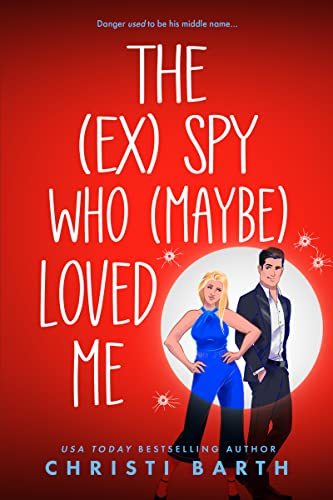
0 notes
Text

Hide your wallets, it's that time again! Your daily thread of romance deals is ready, FREE to $1.99!
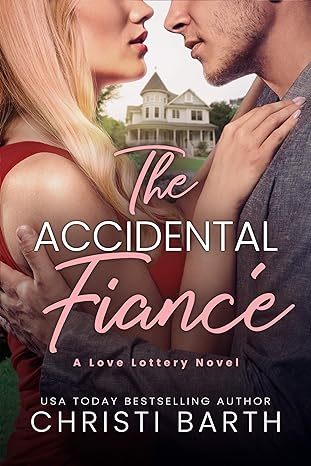
FREE ✦ The Accidental Fiance by Christi Barth
He is trying to fix up an old inn. She has a jet-setter type career and has only returned to town temporarily to help her family. He gets mistaken for the fake fiance she made up.
Contemporary Romance (MF) | https://amzn.to/49ewDRc

FREE ✦ Last First Kiss by Amy Knupp
Best friend's brother. She's an ob-gyn nurse, he was a hockey star until an injury ended his career, now he's a coordinator for a youth league.
Contemporary Romance (MF) | https://amzn.to/3PIAGyd

FREE ✦ The Wedding Agreement by Annie Dyer
1st POV. They were former classmates, and meet again when he needs legal help (she's a solicitor). Fake marriage of convenience.
Contemporary Romance (MF) | https://amzn.to/43E9qqr
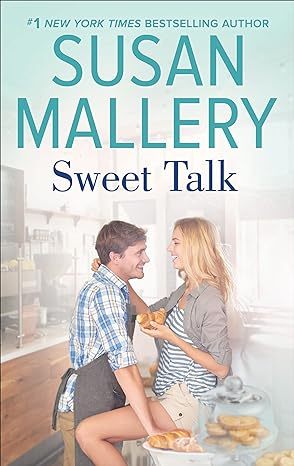
$0.99 ✦ Sweet Talk by Susan Mallery
She's a piano prodigy who returns home to help with the family bakery. He's a single dad.
Contemporary Romance (MF) | https://amzn.to/3TSUmSq

$1.99 ✦ Only a Duke Will Do by Sabrina Jeffries
Second chance. She loves her independence and her work with the ladies reform group, and has no interest in marriage. Until her old flame returns determined to have her again.
Historical Romance (MF) | https://amzn.to/4apVd2I
Putting these lists together takes time. If you appreciate this content, please consider buying me a Ko-Fi. http://ko-fi.com/danielletbq
2 notes
·
View notes
Text

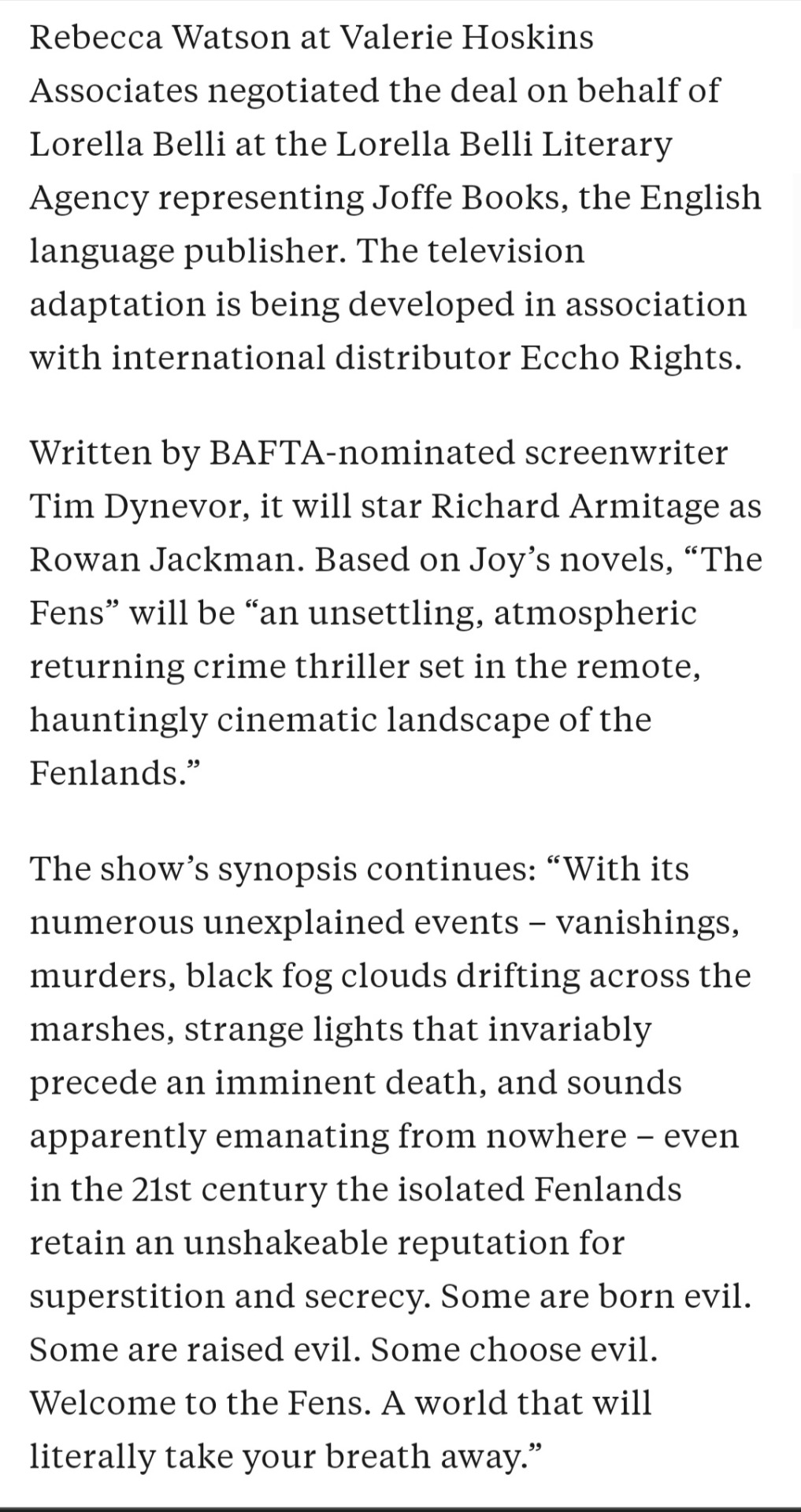
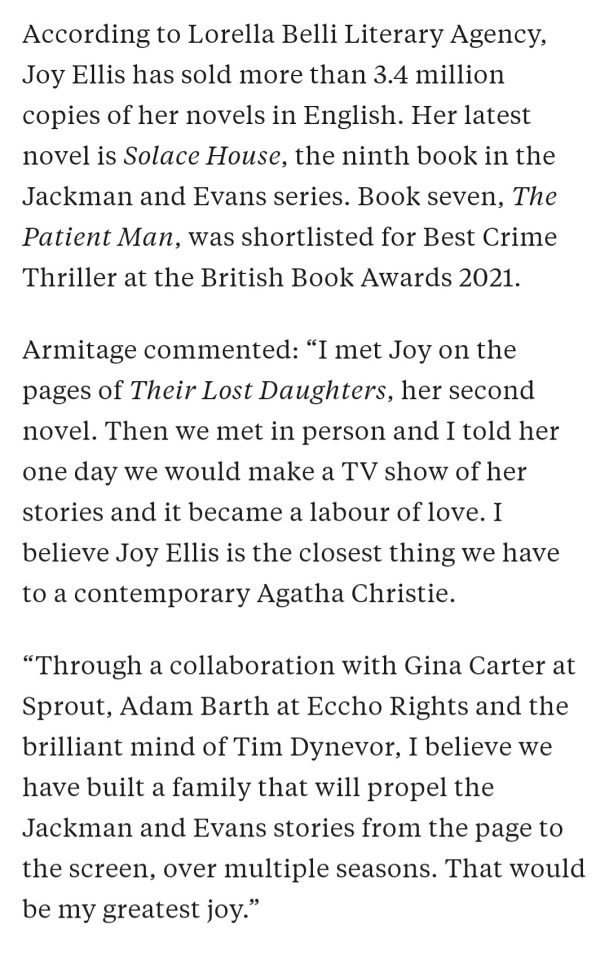
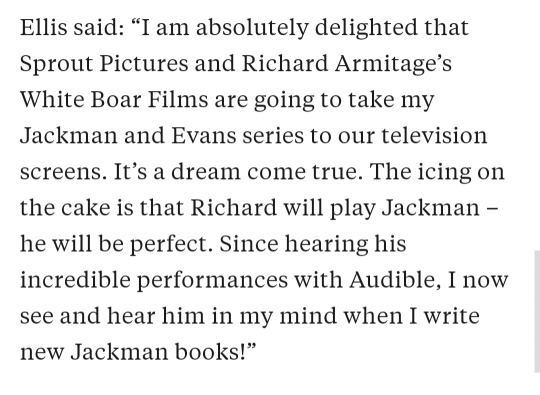
Richard Armitage acquires film and TV rights to Ellis’ Jackman and Evans series and will play lead
Richard Armitage’s White Boar Films and Sprout Pictures have acquired the film and TV rights to Joy Ellis’ Jackman and Evans crime series, with Armitage to play the lead character in a television adaptation “based on the novels” and entitled “The Fens”.
Rebecca Watson at Valerie Hoskins Associates negotiated the deal on behalf of Lorella Belli at the Lorella Belli Literary Agency representing Joffe Books, the English language publisher. The television adaptation is being developed in association with international distributor Eccho Rights.
Written by BAFTA-nominated screenwriter Tim Dynevor, it will star Richard Armitage as Rowan Jackman. Based on Joy’s novels, “The Fens” will be “an unsettling, atmospheric returning crime thriller set in the remote, hauntingly cinematic landscape of the Fenlands.”
The show’s synopsis continues: “With its numerous unexplained events – vanishings, murders, black fog clouds drifting across the marshes, strange lights that invariably precede an imminent death, and sounds apparently emanating from nowhere – even in the 21st century the isolated Fenlands retain an unshakeable reputation for superstition and secrecy. Some are born evil. Some are raised evil. Some choose evil. Welcome to the Fens. A world that will literally take your breath away.”
According to Lorella Belli Literary Agency, Joy Ellis has sold more than 3.4 million copies of her novels in English. Her latest novel is Solace House, the ninth book in the Jackman and Evans series. Book seven, The Patient Man, was shortlisted for Best Crime Thriller at the British Book Awards 2021.
Armitage commented: “I met Joy on the pages of Their Lost Daughters, her second novel. Then we met in person and I told her one day we would make a TV show of her stories and it became a labour of love. I believe Joy Ellis is the closest thing we have to a contemporary Agatha Christie.
“Through a collaboration with Gina Carter at Sprout, Adam Barth at Eccho Rights and the brilliant mind of Tim Dynevor, I believe we have built a family that will propel the Jackman and Evans stories from the page to the screen, over multiple seasons. That would be my greatest joy.”
Ellis said: “I am absolutely delighted that Sprout Pictures and Richard Armitage’s White Boar Films are going to take my Jackman and Evans series to our television screens. It’s a dream come true. The icing on the cake is that Richard will play Jackman – he will be perfect. Since hearing his incredible performances with Audible, I now see and hear him in my mind when I write new Jackman books!”
36 notes
·
View notes
Text
Nine People You Want to Get to Know Better
thank you so so so much for the tag @agentnatesewell!!!!
Last Song: I have pretty much had Shivers by Ed Sheeran & Last Night by Morgan Wallen on repeat lately. They are just so damn catchy. Plus, the major M vibes I get off of Shivers doesn’t hurt either lol ... Also I’m currently rocking out to Stitches by Shawn Mendes as I type this out, so I guess that is technically my last song lol
Currently Watching: When I’ve actually got my TV on and turned to something that isn’t sports, I’ve been binging How I Met Your Mother. And am totally living now that Barney and Robin are engaged!!! I’ve been more invested in their relationship than Ted finding his wife lmao
Currently Reading: It’s been quite a while since I’ve read a book, but I am technically in the middle of reading Wrong for Him by Christi Barth (book 3 in the Love Lottery series). I am also in the middle of another series, Bellamy Creek by Melanie Harlow and I think book 2, which is Make Me Yours, is up next. I also got into some Thomas Hunt feels this week and so I did a replay of Red Carpet Diaries on Choices. And, of course, my Wayhaven fever is still going strong, so I am working on my A route as well (although it admittedly hasn’t gotten far, considering the RCD replay lol)
Current Obsession: Wayhaven. Wayhaven. Katalynn and Mason. Oh ... and did I mention Wayhaven?
tagging @nathanielhsewell @anotherbeingsworld if you guys would want to do it (no pressure, of course!). And anyone who might see this and wants to join in! (I know it’s not 9 but I’ve never been much for rules lol)
2 notes
·
View notes
Text
Books Read/Reread, January/February 2023
Kashana Cauley, The Survivalists
Erica Berry, Wolfish: Wolf, Self, and the Stories We Tell About Fear
Joanna Ebenstein, The Anatomical Venus: Wax, God, Death & the Ecstatic*
Judith Butler, What World Is This: A Pandemic Phenomenology
Bianca Stone, What Is Otherwise Infinite
Christy Wampole, The Other Serious: Essays for the New American Generation
Justin T. Clark, The Zero Season
Erik R. Seeman, Death in the New World: Cross-Cultural Encounters, 1492-1800
Arundhati Roy, The God of Small Things*
Suzan Lori-Parks, The America Play and Other Works
Alexandra West, The 1990s Teen Horror Cycle: Final Girls and a New Hollywood Formula
Alexandra West, Films of the New French Extremity: Visceral Horror and National Identity
Elvia Wilk, Death By Landscape*
Janet Malcolm, Still Pictures: On Photography and Memory
Erin L. Thompson, Smashing Statues: The Rise and Fall of America's Public Monuments
Michael E. Bell, Food for the Dead: On the Trail of New England's Vampires
Roland Barthes, Sade/Fourier/Loyola*
Hanif Abdurraqib, A Little Devil in America: In Praise of Black Performance
Umberto Eco, Travels in Hyperreality
Raymond Williams, Culture and Politics
Lily Hoang, A Bestiary
Nikolai Gogol, Dead Souls
Joel Warner, The Curse of the Marquis de Sade: A Notorious Scoundrel, a Mythical Manuscript, and the Biggest Scandal in Literary History
Aldo Leopold, A Sand County Almanac
Cormac McCarthy, The Passenger
Cormac McCarthy, Stella Maris
* = reread
2 notes
·
View notes